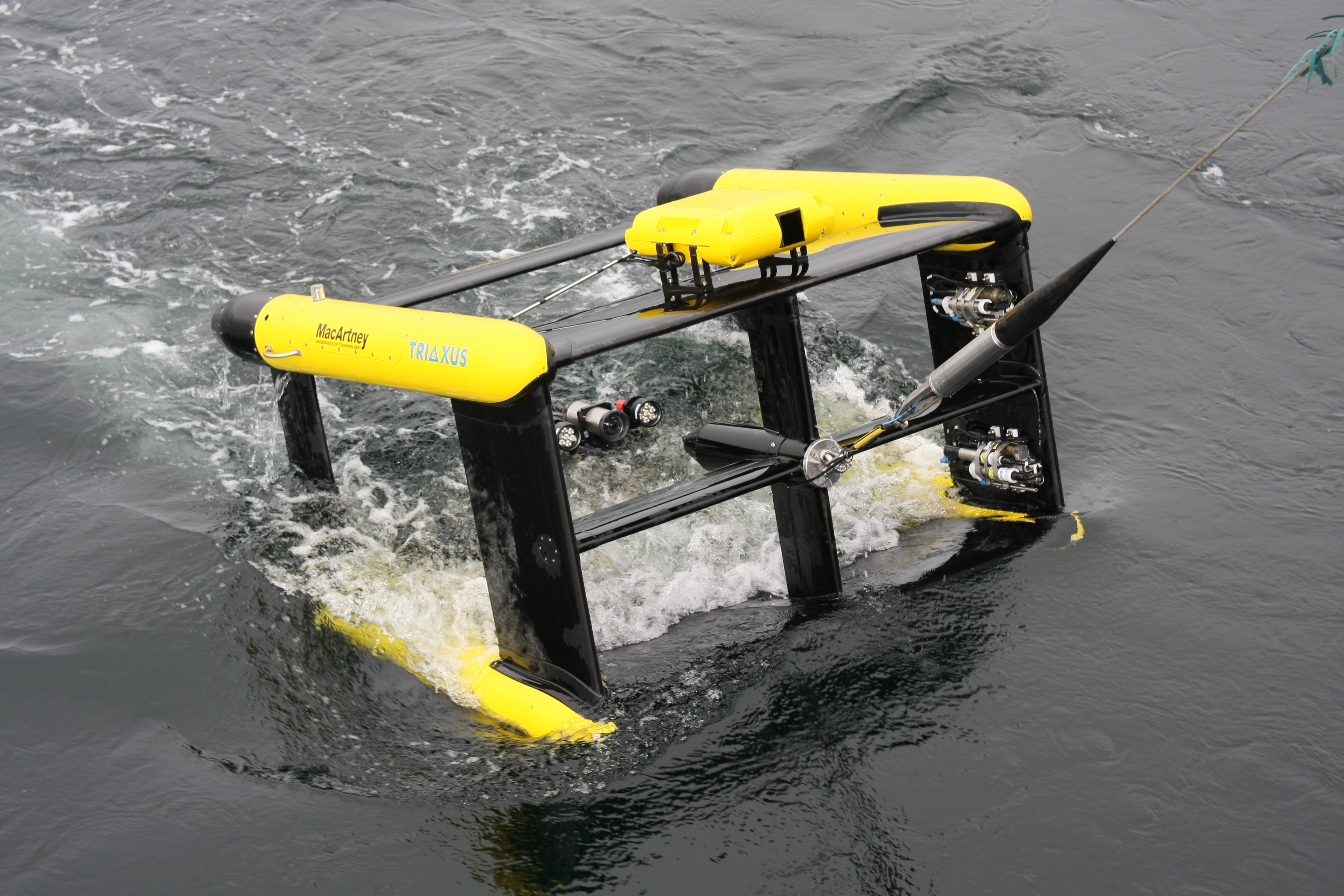What it's used for
 The TRIAXUS is a towed underway profiling CTD (conductivity, temperature, depth) system that is fitted with sensors to measure conductivity, temperature, oxygen, turbidity, fluorescence, and light - especially the wavelengths involved in photosynthesis.
The TRIAXUS is a towed underway profiling CTD (conductivity, temperature, depth) system that is fitted with sensors to measure conductivity, temperature, oxygen, turbidity, fluorescence, and light - especially the wavelengths involved in photosynthesis.
It can also be fitted with instruments to count and identify plankton - as well as estimate the amount of phytoplankton - providing important data on where species live, eat and breed.
How it works
The TRIAXUS is designed to be towed behind the vessel to take horizontal profile measurements of the water column. It is able to collect data quickly in real-time via a fibre optic cable, with data immediately available to scientists on board the vessel.
It can operate to 350 m below the ocean surface and is made of carbon fibre.
What can be added to it
The TRIAXUS can also be fitted with a variety of other instruments such as:
- Laser optical plankton counter (LOPC) to count and identify plankton, providing important data on where species live, eat and breed
- Nitrate sensor
- other instruments supplied by vessel users including spectral absorption and attenuation meter, acoustic doppler velocimeter, and fluorescence induction and relaxation chlorophyll analysers.
What it's used for
The TRIAXUS is a towed underway profiling CTD (conductivity, temperature, depth) system that is fitted with sensors to measure conductivity, temperature, oxygen, turbidity, fluorescence, and light - especially the wavelengths involved in photosynthesis.
It can also be fitted with instruments to count and identify plankton - as well as estimate the amount of phytoplankton - providing important data on where species live, eat and breed.
How it works
The TRIAXUS is designed to be towed behind the vessel to take horizontal profile measurements of the water column. It is able to collect data quickly in real-time via a fibre optic cable, with data immediately available to scientists on board the vessel.
It can operate to 350 m below the ocean surface and is made of carbon fibre.
What can be added to it
The TRIAXUS can also be fitted with a variety of other instruments such as:
- Laser optical plankton counter (LOPC) to count and identify plankton, providing important data on where species live, eat and breed
- Nitrate sensor
- other instruments supplied by vessel users including spectral absorption and attenuation meter, acoustic doppler velocimeter, and fluorescence induction and relaxation chlorophyll analysers.
